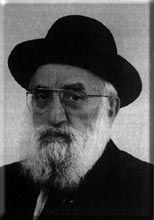Beit Midrash
- Sections
- Chemdat Yamim
- Parashat Hashavua
- Torah Portion and Tanach
- Vayikra
- Achrei Mot
There are problems with the way the Haggada brings this pasuk. First, the second pasuk seems to be out of the context of national growth, which the Haggada is trying to prove. Secondly, it is brought out of order, as first pasuk 7 is brought regarding the growth into adolescence (parallel to Bnei Yisrael’s national growth), and then pasuk 6, which deals with the infant girl’s being found abandoned with blood from her birth still on her, is brought.
The reason the pasuk made it into the Haggada is probably Chazal’s statement (Shemot Rabba 17:3) that its two mentions of blood hint at the blood of mila and Korban Pesach, which gave life by being the mitzvot in whose merit Bnei Yisrael were redeemed. According to that understanding, the Haggada’s order makes sense, as it explains how Bnei Yisrael reached redemption, which took place after the growth of "adolescence."
How, though, does this approach explain the order of the p’sukim? Regarding placing the Korban Pesach’s blood on the door to protect Bnei Yisrael, the midrash continues that the door’s lintel refers to the merit of Avraham and the doorposts refer to the merit of Yitzchak and Yaakov. While both are significant individually, what is the connection between the merit of the patriarchs and the blood of Bnei Yisrael’s own merit from their own mitzva? Let us suggest that the birth blood is an indication of Bnei Yisrael’s strong bloodline, the merit/strength that Bnei Yisrael inherited from the patriarchs. This strength is responsible for everything, from the eventual growth of a family into a burgeoning important nation that is ready to rise to the occasion and slaughter a deity of Egypt and put the blood on their doorposts.
Without our own merits, we cannot accomplish anything, but even when we succeed, we need to credit not only Divine Assistance but also the bloodline from our patriarchs and matriarchs, which give us the strength we need to act our best.

Parashat Hashavua: “All Creation Will Know” – part III
Rabbi Yossef Carmel | Av 5785

Parashat Hashavua: Can One Give a Loan to Hashem? – part I
Rabbi Yossef Carmel | Elul 5785

Present or Inheritance... or Both?
Various Rabbis | Tevet 5768

Zaken Mamreh
Rabbi Yossef Carmel | 4 Elul 5767

Rabbi Daniel Mann

Bikur Cholim by Electronic Means
Shvat 1 5782

Washing Hands with Soap on Yom Kippur
Tishrei 4 5776

Mishpatim Question
5772

























